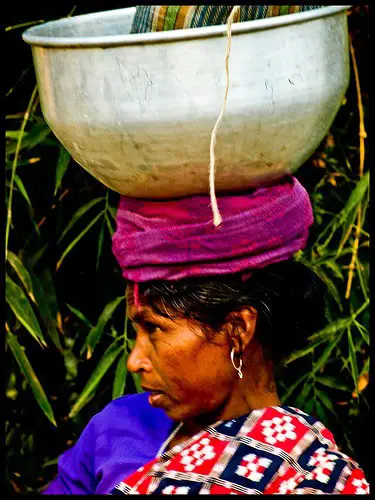Identification of people living below poverty line (BPL) in India is a task carried out by Govt. of India from time to time. The process and methods adopted varies from time to time. Various groups and committees were formed to decide who should be considered as “poor”.
The Expert Group in August 2009 recommended the BPL Identification criteria of
- Automatic Exclusion and
- Automatic Inclusion and
- Assignment of scores to the middle group of population who were neither automatically excluded nor included.

Stage 1: Automatic Exclusion
- If the number of dwelling rooms exclusively in possession of the household is 4 and above (as per the Report) that household will be excluded.
- The household possessing any one of the assets, i.e., ‘4 wheeler motorized vehicle’, ‘AC Set’ and ‘computer or laptop with internet’ will also be excluded.
- Households possessing any three of the following four assets, i.e., refrigerator, telephone (landline), washing machine, two wheeler motorized vehicle will also be excluded.
Stage 2: Automatic Inclusion
Households facing various kinds of deprivations and vulnerabilities viz. residential, social and occupational vulnerabilities would be automatically included in the BPL List.
- Residential vulnerability If the household is ‘houseless’ as defined in the Report or the household has a house with roof and wall made of plastic/polythene or the household having only one room or less with the material of wall being grass, thatch, bamboo, mud, un-burnt brick or wood and the material of roof being grass, thatch, bamboo, wood or mud, then that will be automatically included.
- Occupational vulnerability The household having no income from any source; any household member (including children) engaged in a vulnerable occupation like beggar/rag picker, domestic worker (who are actually paid wages) and sweeper/sanitation worker /mali); and all earning adult members in a household are daily wagers or irregular wagers, then that household should be automatically included.
- Social vulnerability – If there is no member of the household aged 18 years and above (Child-headed household) or there is no able-bodied person aged between 18 and 60 years in the household or all earning adult members in a household are either disabled, chronically ill or aged more than 65 years, then that household should be automatically included.
Stage 3: Scoring Index
The remaining population is ranked on points varying from 0 to 12 with maximum 5 points for residential vulnerability, 5 points for social vulnerability and 2 for occupational vulnerability in urban area. The households with 0 points are excluded from BPL list. The households with 4 points or more are identified as BPL households.
Those households with scores from 1 to 12 are to be considered eligible for inclusion in the BPL List in the increasing order of the intensity of their deprivations meaning thereby that those with higher scores are more deprived.
The Expert Group recommends that the set of households qualified for automatic inclusion in the set of BPL households should be taken as hard core poor. Of the middle group of households (neither automatically excluded nor automatically included) a substantial number of households will score zero. These households will be added to the excluded group. The remaining of the households subject to scoring, will be distributed largely between score 1 and 8. If the objective is to divide the entire urban population in two groups, i.e., above poverty line and below poverty line, then all those households with score 4 and above could be added to the automatically included households in order to get the population below poverty line.
Read about Human Poverty Index (HPI), What is a Slum